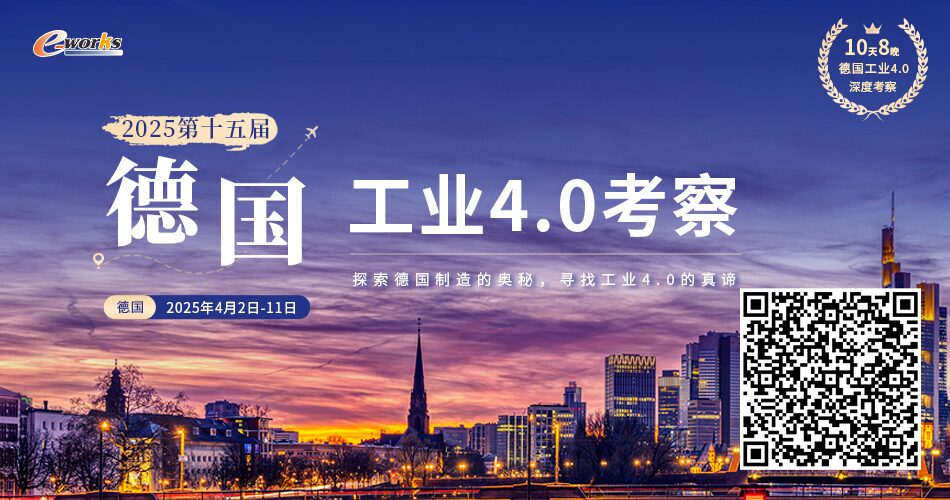
Click 【Industrial Automation Insights】 to follow us!
Industrial control systems are generally a collective term for several types of control systems, including Supervisory Control and Data Acquisition (SCADA) systems, Distributed Control Systems (DCS), and Programmable Logic Controllers (PLC), among others.
Source: Smart Manufacturing Home
01

Five-Layer Architecture
The classic hierarchical model of industrial control systems in the international standard IEC62264-1 divides typical industrial control systems into five levels based on functionality, which are: Enterprise Resource Level (Decision Management Level), Production Management Level (Operation Management Level), Process Monitoring Level, Field Control Level, and Field Device Level (Physical Device Level).
The five-layer architecture is as follows:
-
L0 Physical Device Layer: Composed of actuators, sensors, intelligent instruments, motors, and actuating devices, it primarily completes the conversion between various physical variables and electrical signals during the production process, collects on-site production data, and executes control commands, forming the basis for digitalization in “smart manufacturing”.
-
L1 Field Control Layer: Composed of DCS controllers, PLCs, and other devices with logic control functions, it receives data from the physical device layer (such as sensors, transmitters, or intelligent instruments), calculates the required control amount according to a certain control strategy, and sends it back to the on-site actuators (such as valves and motors). The operator stations and engineer stations at the field control layer can simultaneously perform continuous control, sequential control, or logic control functions, achieving monitoring and control of on-site equipment.
-
L2 Process Monitoring Layer: Mainly composed of operator stations, engineer stations, OPC servers, SCADA systems, and DCS systems, it centrally monitors the production site and production status, providing an overall view of the enterprise’s production conditions.
-
L3 Production Operation Layer: Mainly composed of MES, MIS systems, production command, operation scheduling, and office terminals, it primarily implements execution management of the production process (manufacturing data management, planning and scheduling management, production scheduling management, inventory management, quality management, work center/device management, tool and fixture management, material management, production dashboard management, production process control, lower-level data integration analysis, upper-level data integration decomposition), records data processing, and production command scheduling.
-
L4 Decision Management Layer: Mainly composed of ERP, CRM, procurement, portals, OA, email, and office terminals, it encompasses various information systems and information support systems of the enterprise and integrates various resources, combining and analyzing summarized data from multiple dimensions, providing decision-making support for management operators of the group headquarters and its subordinate enterprises.
Next, let’s introduce industrial control systems. What are industrial control systems? They refer to automatic control systems composed of computers and industrial process control components, consisting of controllers, sensors, transmitters, actuators, and input/output interfaces. These components are connected through industrial communication lines according to certain communication protocols, forming an industrial production or processing system with automatic control capabilities.
They are generally a collective term for several types of control systems, including Supervisory Control and Data Acquisition (SCADA) systems, Distributed Control Systems (DCS), and Programmable Logic Controllers (PLC), among others.
02

PLC
Coal Industry: In coal enterprises, the PLCs used are mainly brands like Siemens, AB, Mitsubishi, and Honeywell, primarily applied in transportation systems, coal selection systems, and mining systems.
Power Industry: In thermal power enterprises, PLC devices are mostly from brands like Siemens, Rockwell, and Schneider, primarily applied to auxiliary control facilities in thermal power enterprises; while in wind power enterprises, the PLCs used are mainly from brands like Beckhoff, ABB, and Bachmann, primarily used for controlling motors in wind power.
Rail Transit Industry: In railway enterprises, the integration of industrial control systems is entirely undertaken by domestic manufacturers, and the main control systems are also mainly independently developed by domestic manufacturers, with relevant vendors including Casco, Tonghao Institute, Jiaotong University Micro-Link, Lanzhou Dacheng, and Tieke Institute, mainly applied in centralized scheduling, traction power supply, and other systems in railways.
Port Industry: In the port sector, the PLC devices used are from the Rockwell brand, mainly applied in tipping, transportation belts, stacker-reclaimers, and loading operations.
Shipping Industry: In the shipping sector, the controllers mainly used are from Kongsberg and SAM, applied in ship automation control systems.
Chemical Coal Industry: In chemical coal enterprises, the PLC devices mainly come from Honeywell, Siemens, AB, GE, and Schneider brands, applied in auxiliary control systems in chemical coal, such as coal selection, preparation, desulfurization, wastewater treatment, and more.
03

DCS System
DCS (Distributed Control System) implements real-time control of all devices, alarm management, collection and storage of historical data and events, report generation and storage, and process operations, mainly monitoring the DCS controllers and on-site processes in the production plant or workshop area. Field instrument signals are transmitted to the on-site cabinet room and central control room, with data transmission generally using cables or optical fibers. The DCS system uniformly processes this data, performing all control, monitoring, alarm, and reporting operations in the central control room, as shown in the figure:
The DCS system is mainly used for continuous reaction process control, such as in power generation, chemical, and pharmaceutical industries. Foreign DCS products are mainly provided by manufacturers like FOXBORO, ABB, Emerson, Siemens, Honeywell, and Yokogawa, while domestic DCS products are mainly provided by Shanghai Xinhua, Honeywell, Zhejiang University Control, State Grid Zhishen, and Zhejiang Weisheng.
Power Industry: Mainly used for controlling the main and auxiliary machines of thermal power units in thermal power enterprises, with main brands including Siemens, ABB, Emerson, and domestic brands like State Grid Zhishen and Xinhua.
Chemical Coal Industry: Mainly applied in process control of chemical coal, with main brands including Honeywell, Honeywell, and GE Xinhua.
04

SCADA System
Coal Industry: In the coal mining sector, SCADA systems are mainly used for comprehensive automation monitoring, mainly using WinCC, IFix, Intouch, PSI, pSpace, etc., while also providing centralized monitoring for power supply, transportation, ventilation, drainage, coal selection, and other systems.
Power Industry: In wind power enterprises, mainly used for unidirectional collection of data from the central monitoring layer of wind farms for statistical analysis; it serves as a major subsystem of the Energy Management System (EMS), with advantages such as complete information, improved efficiency, accurate grasp of system operation status, accelerated decision-making, and aiding in diagnosing system fault states. Major SCADA system integrators include Goldwind, Xinjiang Goldwind Technology, State Grid Nanzhi, Siemens, Nari Technology, and Suzlon Energy. Thermal power enterprises also have similar SCADA monitoring systems, such as the NCS system for power plants and substations, with main system integrators being State Grid Nari and Sifang Technology.
Rail Transit Industry: The traction power SCADA system is mainly used for remote monitoring of traction power supply equipment, with the main brand being Chengdu Jiaotong University Light. Other systems, such as decentralized self-discipline scheduling centralized systems and vehicle operation monitoring systems, have similar functions and attributes to SCADA systems. The production and integration of related systems are mainly by domestic manufacturers.
Port Industry: The central control system of the port functions similarly to SCADA systems, mainly used for overall monitoring of the port’s automation systems, involving monitoring and control of the status of transportation belts and other individual machine controls.
Shipping Industry: In shipping enterprises, the ship engine room automation system is similar to SCADA systems, including engine room monitoring and alarm systems, main engine remote control systems, and ship power station systems, providing centralized monitoring of the engine room, main engine, and power station from the control room.
Chemical Coal Industry: SCADA systems are mainly applied in monitoring the power supply and distribution systems of chemical coal enterprises.

↓
Long press the QR code to register online
